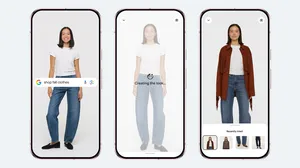A call for the next big ideas in news
This time last year, we launched the Google News Initiative Innovation Challenge, part of our $300 million commitment to help journalism thrive in the digital age.
With our first challenge, we funded 23 projects focused on diversifying reader revenue in the Asia Pacific region. Since then, we’ve launched challenges in North America, Latin America, the Middle East, Africa and Turkey, receiving more than 1,300 project submissions from 77 countries--and recently selected 64 more projects for funding.
Today, we’re opening our second challenge in Asia Pacific. This time, we’re calling for projects which aim to increase reader engagement. The more deeply people engage with the stories they read, the more likely they are to return to a news website, visit more pages during a session, sign up for an email newsletter and become subscribers.
We’re interested in hearing about creative ideas around reader engagement, including but not limited to personalization, analytics, audio and loyalty programs. And the Innovation Challenge is open to organizations of every size--startups, NGOs, broadcasters, traditional news publishers and freelancers--so long as they can clearly show the impact of the project from a reader’s perspective, and deliver it within a year.
The application window for project submissions is open until January 7, 2020, and you can read more about the eligibility, rules and criteria and funding at the Google News Initiative website or at a town hall on November 13.
To find out more about the results of the first round of funding, we spoke to Disha Mullick of Khabar Lahariya, who has created a new subscription model around a video series about young people in rural India.
How did you develop this subscription model?
We initially talked about aiming the subscription model at our primary, rural audience. The dream is for this audience to become our strongest, most loyal subscribers. But discussions internally with the Google News Initiative and with our peers in digital media pushed us to test the idea with our urban, English-speaking audience first.
Our vision is to take hyper-local content and voices to a broader audience through immersive video storytelling. Embedded reporters would help link these local stories to global shifts in gender and power, technology, environmental change and financial instability. If this platform works, we’ll adapt it to other audiences who may take longer to come around to the idea of paying for content.
What is the long-term plan for growing your subscriber base?
We plan to create a model that combines the features of a membership model and a digital subscription or paywall--one that’s inclusive of both rural and urban audiences willing to pay for good quality, hyper-local content. We also hope to be able to provide other features, like workshops and fellowships, travel opportunities—perhaps even access to small grants for media or other entrepreneurial projects.
What advice would you offer the next group of reporters looking to increase reader engagement?
I can't over-emphasize the impact of investing in local content. Even if that's not what gets monetized easily, it’s what builds trust and credibility, which have been shaken by the amount of misinformation floating about. I also think the way we engage readers needs to be responsible, to counter the state's imperative to control social media or the flow of information on the internet--which may be knee-jerk reactions to the violence and abuse we see.






